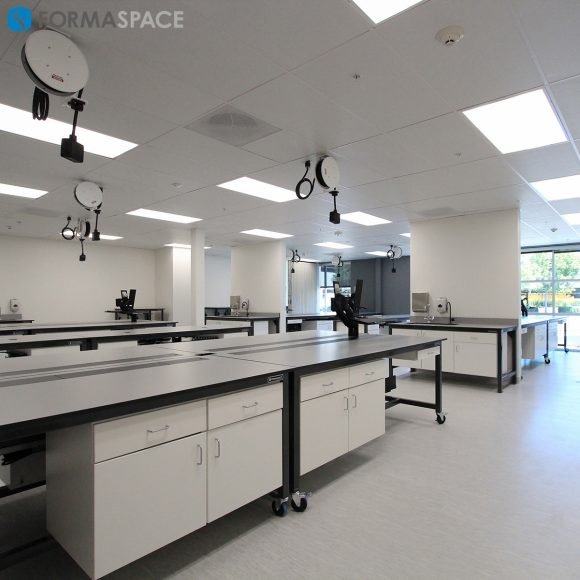With $1 billion in funding, the new Advanced Research Projects Agency for Health (ARPA-H) could transform healthcare outcomes – if things work out.
To get a better understanding of this new agency, we turned to interviews with Acting Deputy Director Dr. Adam Russell and newly appointed ARPA-H Director Dr. Renee Wegrzyn.

What is the ARPA-H Mission and Vision, according to Acting Deputy Director Dr. Adam Russell?
Dr. Russell is an anthropologist and “graduate” of DOD’s DARPA program, where he studied social behavior with the aim of creating more effective organizations – a very useful skill for standing up an important new agency such as DARPA-H.
Dr. Russell sees his acting deputy role as operational, prepping “this rocketship for takeoff” by building a new team and helping establish the agency’s culture.
https://www.youtube.com/watch?v=SXDdJgGw9Ic
Dr. Russell’s working interpretation of the ARPA-H vision is to “empower every American to realize their full health potential,” and its mission is to “find, create, and accelerate high-impact health solutions to well-defined problems.”
To achieve these ambitious goals, Russell leans on established DARPA principles, particularly the Heilmeier Catechism (named after George H. Heilmeier, DARPA Director 1975-1977) used to select and refine which problems to solve:
- What are you trying to do? Articulate your objectives using absolutely no jargon.
- How is it done today, and what are the limits of current practice?
- What is new in your approach, and why do you think it will be successful?
- Who cares? If you are successful, what difference will it make?
- What are the risks?
- How much will it cost?
- How long will it take?
- What are the mid-term and final “exams” to check for success?
New ARPA-H Director Dr. Renee Wegrzyn Reveals Tantalizing Details about the Agency’s Plans for 2022
On September 12, 2022, President Biden appointed Dr. Renee Wegrzyn, an executive with Boston-based Gingko Bioworks (disclaimer: a Formaspace customer).

Like Dr. Russell, Dr. Wegrzyn is a DARPA alum – she was a Program Manager working on scaling up mRNA vaccine production – which ultimately helped deliver billions of doses of mRNA-based Covid vaccines around the world.
Just after her appointment, Dr. Wegrzyn sat down for an interview at Howard University, where she echoed the ARPA-H vision and mission statement outlined by Dr. Russell.
But she was able to go further, providing more specifics and tantalizing hints of how she intends to guide ARPA-H to achieve its potential.
In Dr. Wegrzyn’s view, ARPA-H can best serve its vision of transforming healthcare by developing a set of “tools and platforms” to solve problems spanning multiple healthcare issues rather than tackling one disease at a time.
https://www.youtube.com/watch?v=zaI3279j6oM
When asked to paint a picture of the scope of ARPA-H’s programs, Dr. Wegrzyn acknowledged that “$1 billion is a lot of money, but it will go fast. Programs at (D)ARPA have historically tended to be on the scale of 100 – 150 million dollars.”
Based on this insight, we can expect the ARPA-H to initially fund between 6 and 10 programs.
From Dr. Wegrzyn’s perspective, the next steps are to launch a new recruiting website and bring on Program Managers and administrative staff.
She acknowledged the advantage of having direct hiring authority (a rarity in federal employment) and the helpful assistance of the NIH in standing up the organization.
But while ARPA-H fits within the NIH org chart on paper, she did not elaborate on where its new headquarters would be located. More on that later.
Once the key hires are in place, she envisions intensive community outreach in the form of “Proposer Days” (hosted by Program Managers) to find experts in the research community who can pitch their ideas to ARPA-H and hopefully be selected for a “transformative” 3- or 4-year project to solve some of the hardest problems in healthcare.

Will the DARPA Method Achieve Success in Healthcare or Will Politics Get in the Way?
DARPA’s military origins trace back to the Sputnik era when Americans demanded something be done to help us catch up to the Soviets in the Space Race.
Over the years, DARPA has gained a good reputation thanks to innovations, such as GPS and the Internet, that had a huge positive economic on the commercial sector.
Dr. Wegrzyn gave us two examples of how DARPA projects have impacted healthcare, the first being the program she managed (e.g. scaling up mRNA vaccines), and the second an ultra-porous sponge capable of extracting up to 300 gallons of fresh water daily from dry desert air.
But will this DARPA model work in healthcare?
Critics argue that it’s a duplication of effort, and allocating new funding to ARPA-H will undercut budgets for established research projects at the NIH or the NCI.
Yet other critics argue that ARPA-H’s organizational ties to the NIH won’t allow it to be independent enough to develop unconventional “out of the box” ideas.
Meanwhile, some members of Congress have suggested ARPA-H’s funding be cut unless it’s cut loose from the NIH umbrella.
There may be an ulterior motive, however. There is intense competition among lobbyists from Atlanta, Baltimore, Boston, Chicago, the North Carolina Research Triangle, and the Texas Medical Center (among others) to land the ARPA-H headquarters in their districts – so prying ARPA-H away from the NIH may be an attempt to take Bethesda, Maryland (home to the NIH main campus) out of the running.
In our view, we wouldn’t be surprised if the ARPA-H settled into the Boston area, given Dr. Wegrzyn’s long-standing ties to the area as an executive of Gingko Bioworks.
But, given the fact that today’s research projects are often highly distributed across different research facilities, we wonder if landing the ARPA-H headquarters will provide the economic boost these lobbying groups are hoping for. It certainly will bring bragging rights, but the hands-on lab work will likely be conducted in the home laboratories of the individual PIs running the projects.
Formaspace is Your Laboratory Research Partner.
Formaspace builds exceptional custom laboratory furniture in America at our headquarters in Austin, Texas. Contact your Formaspace Design Consultant today to learn more.













